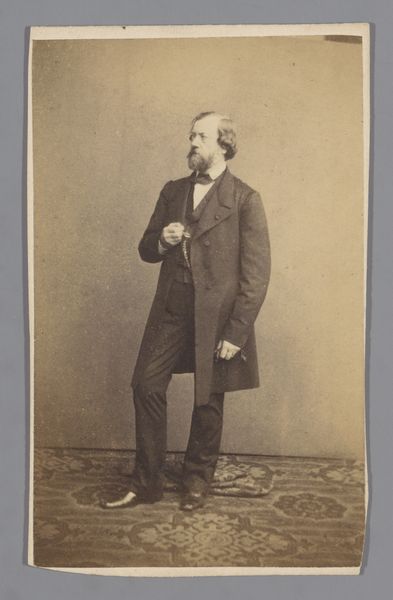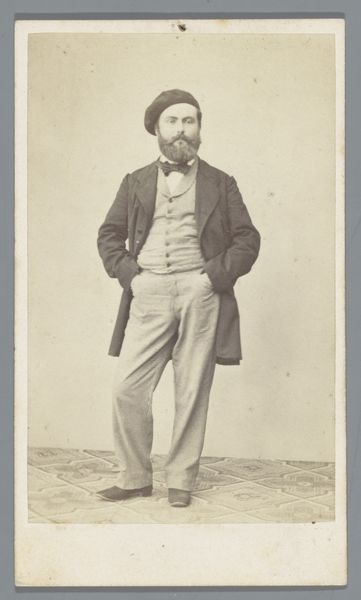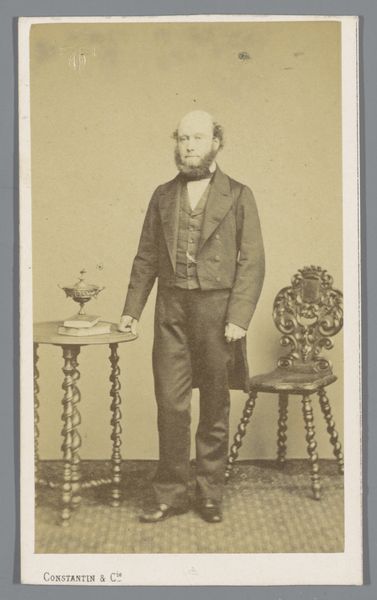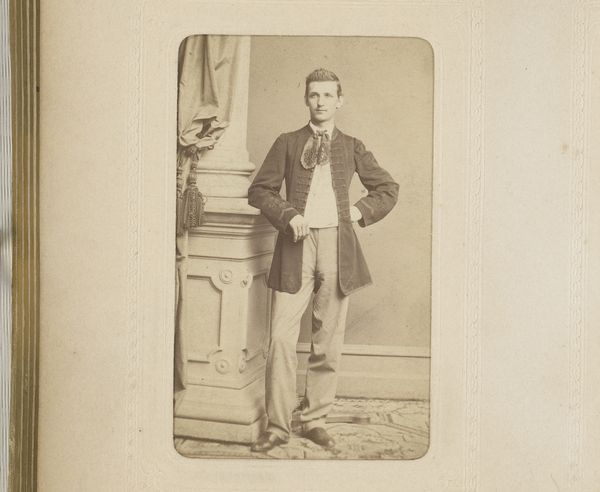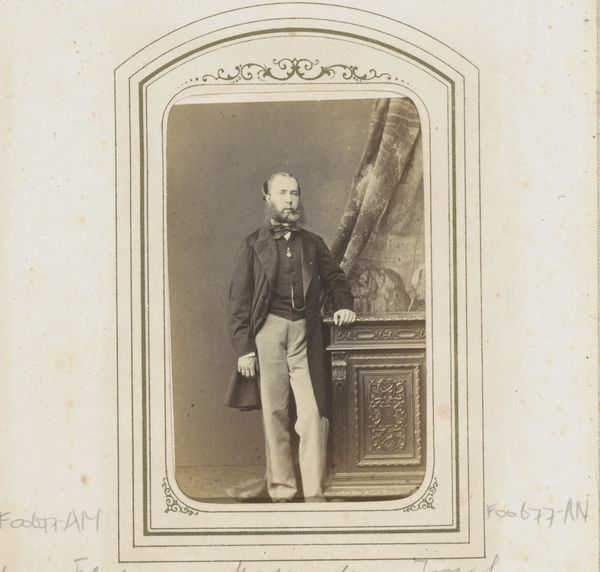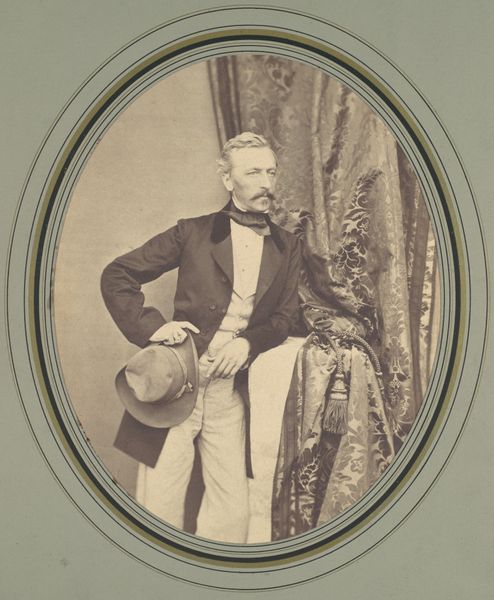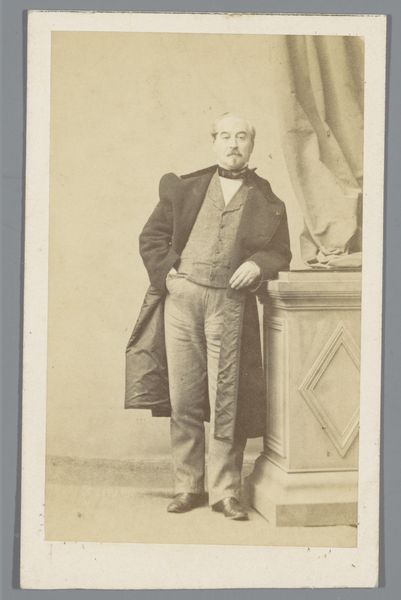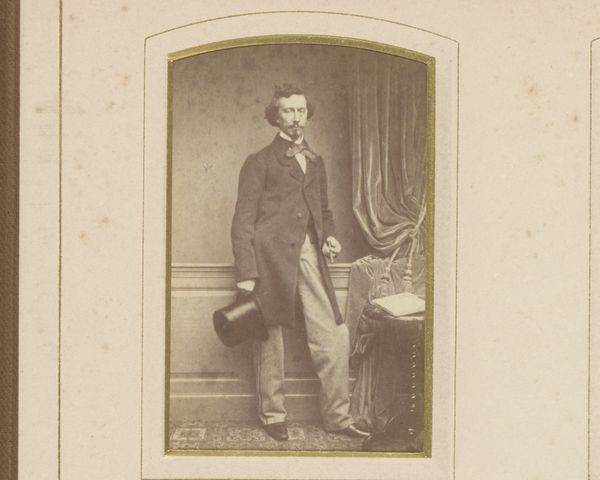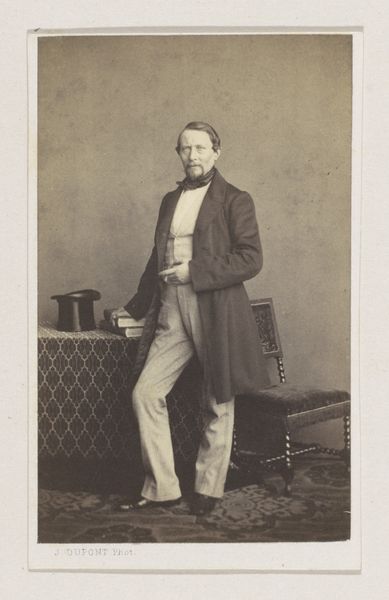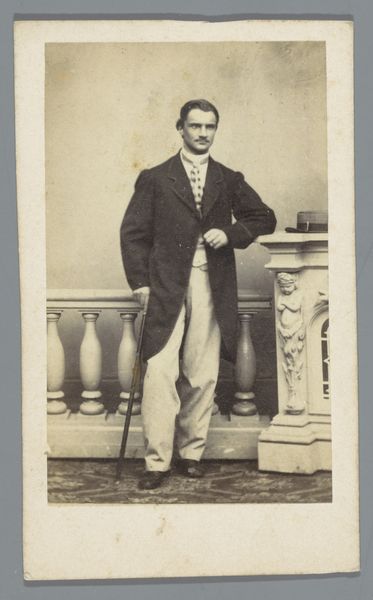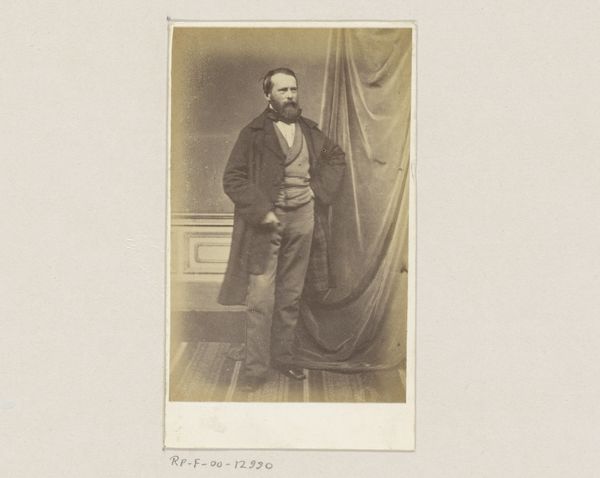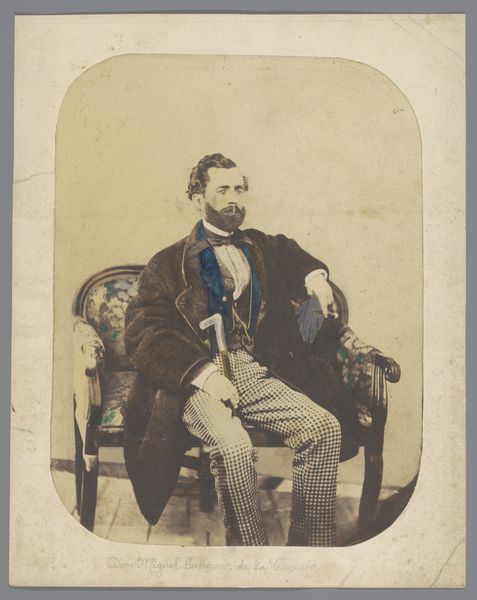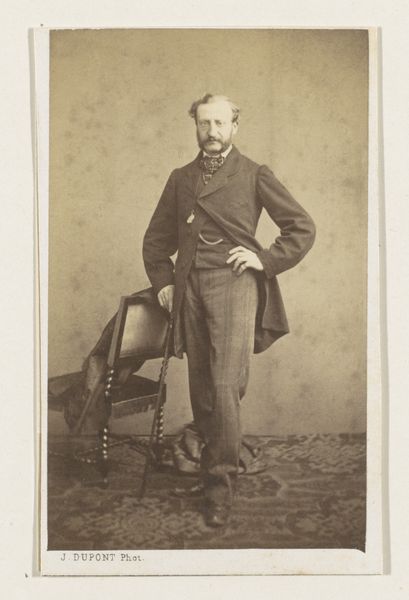
photography, gelatin-silver-print
#
portrait
#
photography
#
gelatin-silver-print
Dimensions: height 103 mm, width 61 mm
Copyright: Rijks Museum: Open Domain
Editor: So this is "Portret van een onbekende man," a gelatin-silver print made sometime between 1854 and 1889 by Disdéri & Co. currently at the Rijksmuseum. It has a strangely intimate feel, even though it's a formal portrait. What do you make of this piece? Curator: I immediately consider the implications of the gelatin-silver printing process. It’s mass reproducible and was a commercial operation by Disdéri & Co., so how does this change how we traditionally view art as unique and individualized? What does the shift to mechanical production mean for art’s social function? Editor: That's a perspective I hadn't considered. The subject seems like he is part of the upper class. Does that social class change your perception? Curator: The subject's class is less interesting to me than how his image participates in a culture of image production and consumption. These prints were not solely about commemorating individuals; they were commodities circulated in a burgeoning visual culture. Consider the labour involved in creating these objects – from the photographers to the printers. How might we read the photograph as a document of that labor and of Disdéri’s assembly line of artistry? Editor: So you're less focused on the "who" and more on the "how" and "why" it was made. Curator: Exactly. What needs were being fulfilled by these kinds of reproducible images and what materials made this shift in visual culture possible? It highlights how shifts in materiality change what can be captured. The use of gelatin silver, replacing previous methods, marked a turning point in photographic practices, enabling higher resolution and greater ease of reproduction, influencing social practices and material possibilities. Editor: I never thought about photography in terms of materials, and its effect on consumer culture and art making. It's broadened my perspective immensely. Curator: It’s crucial to question those boundaries between ‘art’ and mass production; the cultural and economic impact of accessible photographic technologies. The intersection of craft, labour and commercial interest invites new understanding of 19th-century portraiture.
Comments
No comments
Be the first to comment and join the conversation on the ultimate creative platform.
